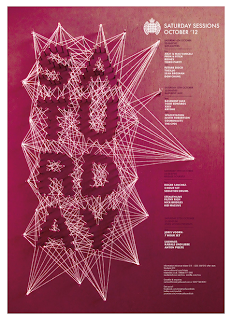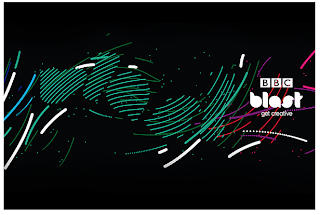Another section of the history of the BBC Radio comes down to the equipment that has been developed over the years and how this has influenced the radio in itself. The idea of this can link into the project and the exhibition by having a section of it on the equipment.
1932 broadcasting house
When Broadcasting House, London entered service in 1932 the BBC published a book of photographs of the building called "Broadcasting House". Its pictures give us not only a view of the studios and other technical areas but also of many other parts of the building. A corridor, a staircase, a dressing room, the boiler room and the ventilation plant were all considered worth recording just as much as the Control Room, the Concert Hall or the Chapel Studio (3E).
In addition to this volume, a further book ("A Technical Description of Broadcasting House") detailed various technical aspects of the new building. From this we can attempt to work out just how the broadcasting system worked from microphones to the lines to the transmitters.
These books can still be found in second-hand bookshops and are well worth seeking out, though the technical one can be hard to find. So this site is an attempt to make their content more easily accessible.
In these web pages you can find most of the photos from the books together with some extra photos from the 1930s. The first volume worked through the building floor by floor and a similar arrangement has been used here. Each link to a 'floor' will open a page featuring a simplified floor plan and the menu to the left of the screen will offer one or more extra pages featuring the photos of the various areas on that floor. You can also navigate by clicking on the grey areas of the floor plans. The amount of technical information on these pages has been kept to a minimum.
For more detailed information about the studios and the Control Room, refer to the final 'Technical' section. Here you will find several diagrams reconstructed from the originals in the technical book and notes describing the broadcast chain in detail. My thanks to Barry Taylor for his significant contribution to this section.
Most of what appears on these pages had gone by the end of the twentieth century. The building underwent a major reconstruction in the early years of the twenty-first, being officially re-opened by the Queen in April 2006.
Belfast Control Room in 1930's
The Control Room was equipped with two rows of bays, one on the left of the main desk with line termination and test equipment and the other row (right) to the right of the desk. This was made up of about eight bays, some "standard" bays, some made of angle iron. The fuse bay consisted of a sheet of metal fixed between two other bays and containing fuses for all the Control Room equipment. Much of the wiring was taken direct to the jackfields, etc, without going via mounted terminal blocks. During the summer of 1936 this row of bays was replaced by standard equipment occupying the same position.
This work was made particularly difficult because there was only about 18" between the rear of the equipment and the wall of the Control Room. This was not really sufficient space in which a wireman could work. In addition, the amplifiers and jackfields were in constant use for live programmes. Bays carrying live programmes had to be removed from the plinth and leant against the back wall to allow new bays to be erected on the plinth.
The Blattnerphone
An essential requirement of a recording system for broadcasting is that it should be possible to playback as soon as possible after making a recording. When broadcasting began the manufacture of gramophone records was a well established industry, but the process involved in making a record took at least twelve hours. It wasn't until 1930 that a tape recording system suitable for broadcast use was available.
As early as 1900 the Danish engineer Valdemar Poulsen (1869-1942) was demonstrating his Telegraphone at the Paris Universal Exhibition. This machine magnetically recorded telegraphy transmissions on a steel wire. In 1924 Dr. Kurt Stille (1873-1957), a German engineer, developed a practical office dictating machine which was produced by the Vox Gramophone Company. This, too, recorded onto steel wire but the quality fell far short of broadcast standards. The BBC became aware of this machine and closely followed developments in magnetic recording. Its interest increased with the coming of the Empire Service, where the same programme would be repeated several times for different time zones.
Film producer and showman Louis Blattner (1881-1935), a German who lived in England, formed a company to develop and market Stille's inventions. Among the projects that he set his engineers was to produce a machine which he hoped could be used as a source of sound synchronised to film.
In September 1930 a machine was installed for trials at Avenue House, then the home of the BBC's Research Department and the results were deemed good enough for speech, but not for music. The BBC negotiated a five-year rental agreement with the British Blattnerphone Company in January 1931 at £500 for the first year, £1000 per year thereafter, plus £250 for each additional machine.

In May 1931 the Blattnerphone was moved to Savoy Hill (right) and entered service. In March the following year it was moved again, this time to the newly constructed Broadcasting House where it was installed on the seventh floor. A second machine soon joined it, allowing recordings of any length to be made by switching between the two recorders. These first machines were made in Germany. They recorded onto 6mm wide steel tape which ran at 5ft/sec. A full spool weighing 21lbs contained just over a mile of tape giving a recording time of twenty minutes. The speed of the D.C. motor had to be controlled by watching a stroboscope attached to the capstan and operating a sliding rheostat. The machines soon proved to be mechanically unreliable. In September 1932 a third machine was installed at BH. Again of German manufacture it used 3mm wide tape which came on spools allowing 32 minutes recording time. The drive was by an A.C. motor. With careful adjustment this machine gave better results than its predecessors, but still suffered from uneven tape speed.
At the end of 1932 a programme called "Pieces of Tape" was produced in the Blattnerphone room, being a compilation of several tapes recorded that year. However, the mechanics of the editing process were too laborious for regular productions using the technique.
The following February a second 3mm machine arrived. Designed (by von Heising of the British Blattnerphone Company) and built in England it was bench mounted and used two A.C. motors, one for the tape drive and the other for the spools. Although it was better engineered and more reliable than the other machines it was mechanically noisy and had worse speed constancy than the original machine.
By now the original 6mm machines were being used only for transferring the recordings they had made to discs. The 3mm machines required considerable maintenance effort to keep them working, and this had an impact on the number of bookings that could be fulfilled. When the Marconi Company bought the Blattnerphone rights in March 1933 they offered to sell the BBC the four rented machines. The Corporation wanted British Blattnerphone to replace all four with a new improved design from Marconi as soon as possible. In the meantime it hired three machines of the von Heising design which were installed by January 1934.

These machines had five heads on the central pillar - spare record and play heads had been added allowing immediate change-over should one of the heads fail. This seems to have been done at the suggestion of BBC engineer R. C. (Reggie) Patrick, then working for Research Department, who was installing the BBC machines. When an edit damaged the pole pieces the other head was brought into contact with the tape and the damaged head's pole pieces were replaced.
The two motors were of similar type. The left one, via gearing and a friction clutch, drove the left spool and, via a V-section belt and similar clutch, the right one too. The clutches were adjusted so that the tape was just in tension and when the main tape drive was applied the tape would unwind from one spool and take up on the other.
The second motor was connected through a worm gear and flexible coupling to drive a flywheel, which was rigidly coupled to the 'driving wheel', or capstan. The motion of the driving wheel was transmitted to the tape by a moving canvas friction belt which ran round four jockey pulleys (one of which was adjustable) and also passed below the driving wheel.
During 1934 it was clear that recording was outgrowing its space in BH and in November the three Marconi Blattners and the first von Heising machine were moved to Maida Vale. By this time twenty tapes a week were being recorded for the Empire Service, keeping the machines busy for up to seventeen hours a day. The arrival of the Marconi-Stille machines (see next page) during 1935 allowed the Blattners to be taken out of service and returned to the manufacturer, though one was retained for research purposes. In September 1939 this machine was hurriedly sent up to Wood Norton in Worcestershire, which was about to become the temporary home of several production departments.
Related page
L.G. Smith mentions Reggie Patrick at Wood Norton and the installation there of a Blattnerphone machine.
Reggie Patrick managed to get the machine working in time to make a recording of Prime Minister Neville Chamberlain's speech declaring war on Germany.











































































